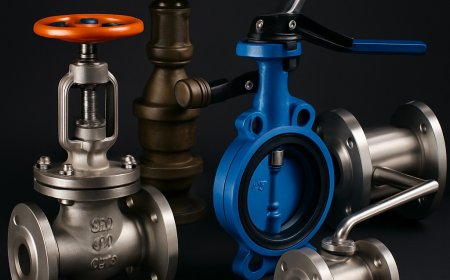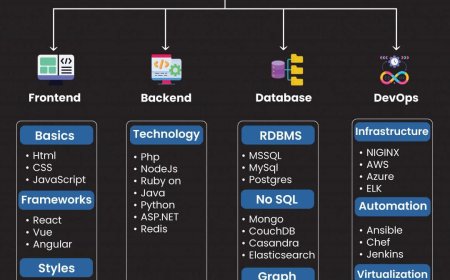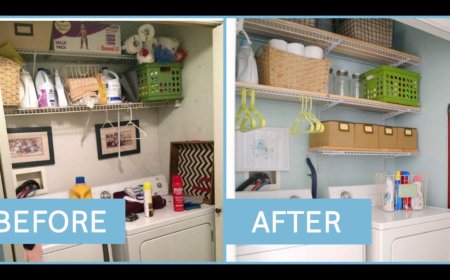Mastering Risk Management for Day Trading Success in Top Proprietary Firms
Traders looking to thrive in day trading in a prop firms setup must adopt a robust risk framework, especially when working with the best prop firms that have defined trading rules and performance expectations.

Day trading offers a fast-paced and potentially profitable path for tradersbut it also comes with significant risk. When operating in a proprietary trading environment, success depends not only on strategy but on strict discipline and effective risk management. Traders looking to thrive in day trading in a prop firms setup must adopt a robust risk framework, especially when working with the best prop firms that have defined trading rules and performance expectations.
This article explores how mastering risk management can significantly increase your chances of long-term success in top prop trading firms.
Understanding the Structure of Day Trading in a Prop Firms
What Is Day Trading in a Prop Firm?
Day trading in a prop firms environment involves executing multiple trades within a single trading day using the firms capital. Traders must meet certain criteria such as profit targets, drawdown limits, and daily loss caps. Unlike retail traders, prop traders dont risk their own moneybut they are expected to manage the firms funds responsibly.
What Makes the Best Prop Firms Stand Out?
The best prop firms offer:
-
Competitive profit splits (often 70% or more)
-
Access to advanced platforms and liquidity
-
Defined evaluation phases and instant funding options
-
Strict rules on position sizing, daily loss, and risk exposure
To succeed, traders must align their strategies with these expectations.
Why Risk Management Is Crucial for Day Traders
1. Protecting Capital to Avoid Drawdown Limits
Top prop firms implement drawdown rules that can disqualify traders from funded accounts if breached. This includes:
-
Daily drawdown limits (e.g., 45%)
-
Maximum trailing or fixed drawdowns
Effective risk management ensures that traders dont lose the account after just a few bad trades. This means:
-
Limiting risk per trade (commonly 0.5%1%)
-
Setting daily stop-loss limits
-
Avoiding revenge trading after a loss
2. Maintaining Consistency for Evaluation Phases
Many of the best prop firms require traders to demonstrate consistent performance over a minimum number of trading days. Without proper risk control, traders may:
-
Overtrade to meet targets quickly
-
Take excessive risk to recover from losses
Smart traders use risk management to maintain consistent profits, which builds trust with the firm and increases the likelihood of long-term funding.
Practical Risk Management Strategies for Prop Firm Day Traders
3. Position Sizing and Leverage Control
Each trade should have a calculated position size based on account balance, risk tolerance, and market volatility. Tools like a risk calculator can automate this.
-
Avoid using full leverage even if its offered
-
Adapt position size to market conditions (e.g., smaller during news events)
The best prop firms reward traders who trade with control, not those who gamble with high leverage.
4. Stop-Loss and Take-Profit Planning
Every trade must have a defined exit plan. Using stop-loss and take-profit orders ensures trades dont spiral out of control.
-
Use logical stop-loss levels based on support/resistance
-
Aim for a positive risk-to-reward ratio (e.g., 1:2 or better)
-
Avoid moving stops emotionally mid-trade
This is essential when day trading in a prop firms setup where every percentage point matters.
Leveraging Tools and Psychology to Manage Risk
5. Using Trading Journals and Analytics
Tracking each trade helps identify behavioral patterns and technical mistakes. A trading journal should include:
-
Entry and exit points
-
Position size
-
Reason for trade
-
Emotional state during trade
This builds a feedback loop for improvement and aligns performance with the metrics expected by the best prop firms.
6. Controlling Emotions Under Pressure
Day trading is stressful, especially with firm rules in place. Emotional discipline is part of risk management:
-
Take breaks after losses
-
Avoid overtrading in volatile sessions
-
Stick to your trading plan regardless of market noise
Mastering mindset is as crucial as mastering charts.
Conclusion
Success in day trading in a prop firms environment isnt about hitting home runsits about controlling risk, preserving capital, and growing steadily. The best prop firms are looking for traders who can demonstrate consistency, patience, and sound decision-making under pressure.
By mastering risk managementfrom setting tight stop-losses to tracking emotional behaviortraders can meet firm requirements, scale their capital, and build a lasting career in the proprietary trading world.



































